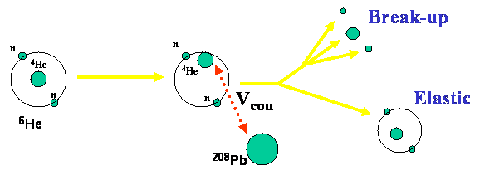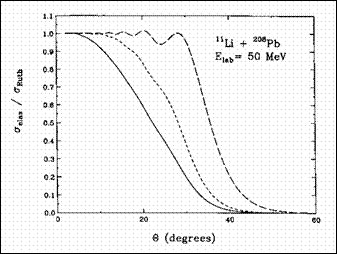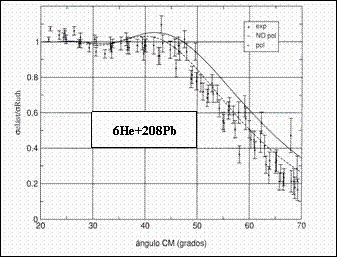Actividad
Dipole polarizability in halo nuclei
One of the main topics of interest of the group is to study the characteristics of the scattering of halo nuclei at energies around the coulomb barrier (6He,11Li,… ). This light nuclei are very interesting from the theoretical point of view, as they have too few nucleons for mean field description, and too many to consider the independent coupling of each nucleon.

From the experimental point of view, they present no excited bound excited states, so "standard" gamma spectroscopy studies cannot be realized. Therefore, one of the most powerful ways to study halo nuclei is by nuclear reactions. In particular, low energy scattering data in the energy region of the coulomb barrier will provide useful information, as reaction mechanisms such as elastic scattering, nucleon transfer, sequencial/direct break -up, and target excitation are dominant reaction channels. These process are very sensitive to the specific details of the nuclear structure of the impinging nuclei. Nuclear structure information of the projectile can be extracted if the structure of the target (e.g.., 208Pb) is well known.

Most of this nuclei are weakly bound, so the coupling to the continuum states will play an important role in the collision process. At energies below the barrier Coulomb scattering becomes the dominant reaction mechanism, so that an important part of the coupling can be induced by the electric dipole operator. This will populate low lying, opposite parity states of the continuum. The effect of this coupling over the elastic cross sections is usually known as dipole polarizability. Dipole polarizability is very sensitive to the shape of the B(E1) distribution, which depends on the specific details of ground state wave function.





